In a BOOM! Studios heavy week, Sam enjoyed the latest issue of Lumberjanes, as well as the special Giant Days holiday issue that can be read outside of the larger series. Kylee had less luck with her series, Skybourne and Lucas Stand both came up somewhat lacking for her.
Jackson liked the latest issue of Descender from Image Comics, but felt like The Punisher Annual #1 fell short of expectations from Marvel Comics.
Want to hear more about what we thought about these issues? Read on – and let us know what you thought in the comments below.
Sam’s Reads
Lumberjanes #31
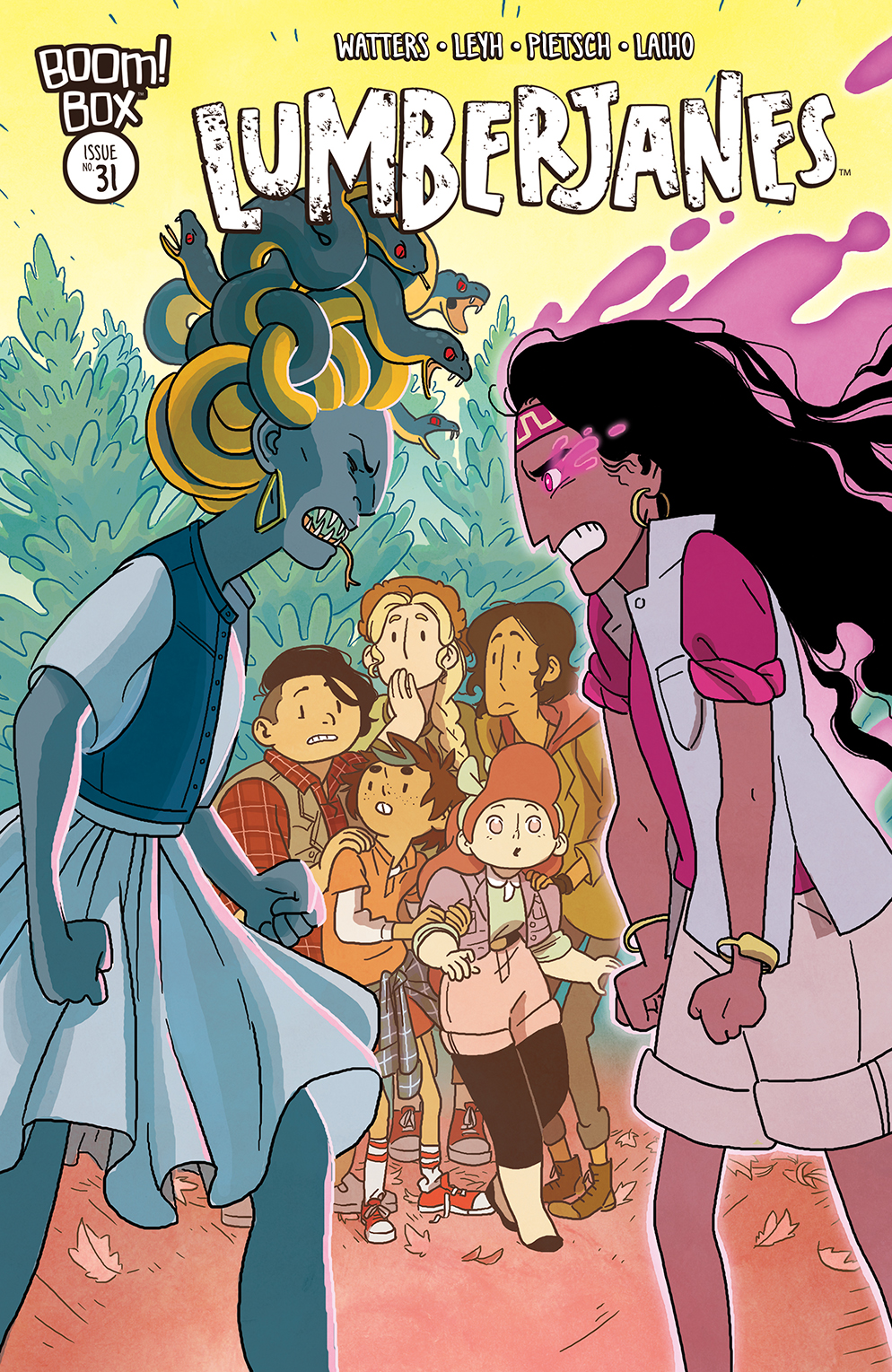

Artist: Carey Pietsch
Publisher: BOOM! Box
Source: BOOM! Studios DRC
★★★★☆
This is a pretty solid issue considering it doesn’t do much to explain what’s going on as far as the weird Spearrow-esque giant birds that are, you know, turning people to stone. The Lumberjanes battle them, defeat them, and then start to sort of focus on how to turn the Zodiac campers back into actual humans rather than glorified statues.
Except we wind up focusing more on the characters rather than the mystery. The girls poke fun at Diane for caring about the Zodiac cabin enough to stay on Earth and hold off on returning to Olympus. We get a little bit of history lesson from her and Ligo, too. For people who aren’t really familiar with Greek mythology – which may include the series’s younger readers – it’s a quirky little primer. It’s also a good jumping off point for the rest of the girls to start talking about their families.
They talk about how families aren’t perfect and they all have their quirks. Molly also gets a little more time to reflect on her own family and their disappointment in her less-than-girly interests. It sucks that her family doesn’t seem as supportive as the other girls’ families but at least she’s got the Lumberjanes.
Despite the fact that it distracts a bit from the supernatural plot, I think it’s great that they’ve been focusing so much on these family issues. Readers probably forget sometimes that this is an all-ages book. For kids, these are important things for the characters to be talking about. Besides, they get back to the action by the end of the issue.
All in all, this manages to be fun, thoughtful, and action packed issue. It balances things well and it’s sometimes nice to have slower-paced moments. Besides, we get to see all the girls fighting the giant birds with their eyes closed to avoid turning to stone. Who could pull that off besides the Lumberjanes?
Giant Days: Holiday Special 2016
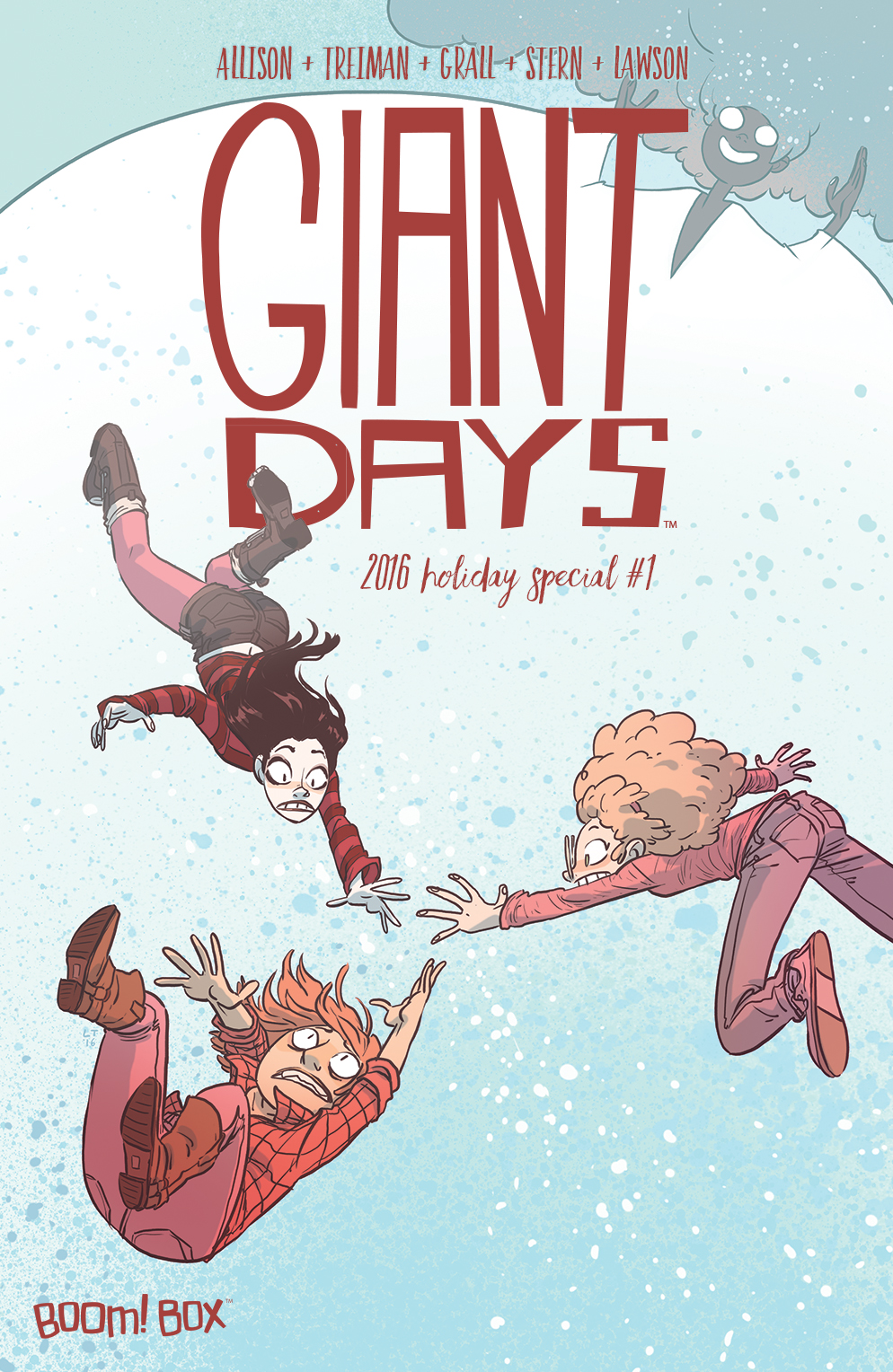

Artists: Lissa Treiman and Caanan Grall
Publisher: BOOM! Box
Source: BOOM! Studios DRC
★★★★☆
This year’s Giant Days holiday special is a classic “What if?” tale. Imagine if the girls never became friends. What would have happened to them? Apparently some pretty awful stuff. Esther ends up being a mean girl. Daisy just becomes a shut in who everyone hates and makes fun of in the dorm. And Susan is basically a bad girlfriend to Ed – who she has already taught to hate McGraw on her behalf.
Yikes.
But even though the girls aren’t friends, they find their paths crossing. Esther isn’t really a mean girl and in the end she and the others come together to try and strike back at the girls who are making everyone’s lives a living hell. (But especially Daisy’s – they even steal the little Christmas tree McGraw gives her. It’s so sad.) So even though we’re seeing this weird alternate reality where the girls aren’t friends they end up being friends anyway.
It’s an enjoyable short even if it’s kind of sad at times. The girls’ lives really aren’t that great without having found their people and having come to love these characters that’s kind of hard to see. At the same time, it’s a cool ‘What if?’ story with an enjoyable ending.
I say this as a McGraw fan, I still think his character design is weird and that he looks like he’s in his late 30s compared to the girls’ being, you know, like nineteen or something. But still. I like McGraw and while everyone else is different in this issue, McGraw is still McGraw. Oh, also, at the end of the issue there’s a weird short about Esther going home for Christmas. Somehow a dude whose really half fish or something ends up coming over? It’s weird. I wasn’t into it.
Fans of Giant Days definitely will want to check this issue out but if you do decide to skip it, you don’t need to worry about missing anything. It’s not tied into the main story in any way except at the very end when we realize it’s all a dream. And if you skip it you won’t accidentally read the weird fish-man short at the end. But you will miss out on an entertaining hypothetical where everyone’s lives are just kinda sucky so I vote you check it out.


Kylee’s Reads
Skybourne #2 (of 5)
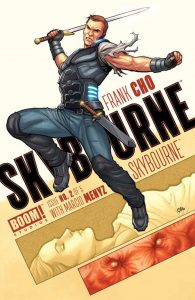

Artist: Frank Cho
Publisher: BOOM! Studios
Source: BOOM! Studios DRC
★★☆☆☆
Based on the concept, I wanted to like Skybourne, but in execution it continues to fall flat for me. Between the fast fridging of a female character to end the first issue, and the stereotypical introduction to our tortured hero, there are unfortunately too many tropes to ignore. At least readers understand that jarring jump from a plane in the first issue. It was Thomas Skybourne, who has determinedly lived out his life in quiet solitude in a monastery with all the same talents as his now-dead sister. Recruited back to the fold by a priest, more things about his past are revealed on the trip back to the shady agency he used to work for.
A jarring scene after speaking about his sister has Thomas running towards a woman in a field before they’re both blown to pieces. For a second, I thought we’d made a hard left turn into incest, but it’s just bad placement narratively. Thomas’ only interest in his sister’s death is how she did it because, surprising no one, he’s got a death wish of his own he’d like to fulfill. With the promise of respite, the agency draws him back into the folds – though he proves himself woefully underprepared for such an undertaking.
Lecherous old men preying on women and slightly racist jokes make up the rest of the narrative, but the artwork continues to be passable. Frank Cho working double duty on the writing and artwork is doing himself no favors, as the most enjoyment I’ve gotten out of this series so far is knowing it’s only on a five issue limited run.
Lucas Stand #5 (of 6)
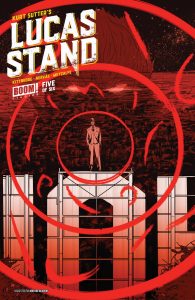

Artist: Jesus Hervas
Publisher: BOOM! Studios
Source: BOOM! Studios DRC
★★★☆☆
With just one issue left, I’m still holding out hope that we meet the other side of the coin to Gadreel’s string-pulling. This issue returns to familiar faces in old Hollywood – some more welcome than others – and Lucas might finally be taking command of his destiny once more. As they slowly unravel the mystery of how the Tempter is evading them, Stand’s demon-hunting tech is breaking down, as is his trust in the others around him. When he somewhat bungles the mission, all Hell doesn’t break loose, but it almost feels like it for those around him.
There’s just one issue left in this fantasy series from Sons of Anarchy creator Kurt Sutter and co-writer Caitlin Kittredge and I’m not sure I see a satisfying conclusion. With the era of the issue formatting, it can conceivably wrap up in the next issue as well as any other, but there are still so many questions, underdeveloped characters, and things Stand hasn’t answered for that surely a few trips into the past haven’t atoned him for.
The cliffhanger of the issue does bring readers to a slightly unexpected place, perhaps as the consequences of Stand’s rash actions, and will no doubt serve up some kind of closure, though maybe not the most uplifting of sorts. With art that transcends panels and makes the best use of hellish imagery, I’ve no doubt that Lucas Stand will end on a memorable note and may even read better in trade format when the series completes.


Jackson’s Reads
Descender #16
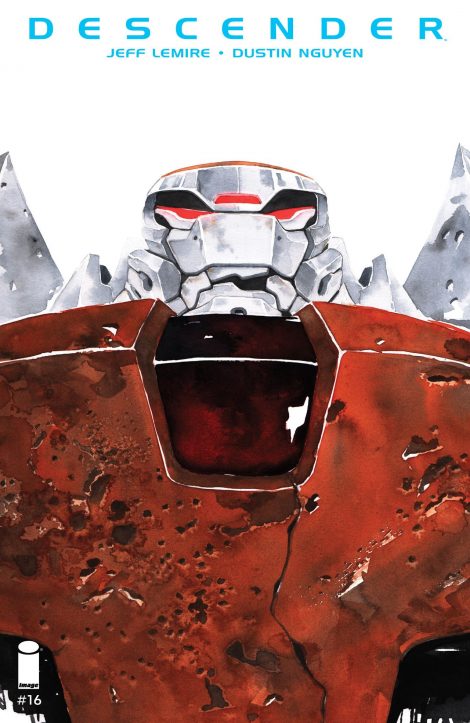
Author: Jeff Lemire
Artist: Dustin Nguyen
Publisher: Image Comics
★★★★☆
I’ve never been good about connecting to narratives about robots trying to define their humanity. The Vision is easily the worst main member of the Avengers. Data is my least favorite Star Trek: The Next Generation character. The Railroad in Fallout 4 are a bunch of idealistic dummies. I feel like I’m still watching Bicentennial Man. There’s something about the question of AI sentience and the nature of morality in regards to synthetic life that immediately turns me off.
I think some of it has to do with even as we begin to develop true AI and services that blend intelligence with functionality like Cortana and Siri, we really haven’t adapted our views towards robotics or learning computers. No one thinks Siri is anything but a tool and an often lousy one at that.
Descender has used the recent “Singularities” arc to shed light on its disparate human, alien and robot main cast to mixed results but more than anything, it’s explored the limits of artificial intelligence most effectively in last month’s issue focusing on robot dog Bandit and this month’s #16 focuses on Driller.
The most blunt of the cast, Driller’s origin here, of a working drone who buckles under the pressure of abuse and neglect by humans and eventually something akin to human emotions, is one of the series most brutal short stories.
Driller and his friend Scooper’s relationship is primitive, one defined by how much the two lumbering robots seem to echo behavior learned from humans, but it feels lived-in and revolving around their sole purpose.
Driller doesn’t erupt into violence at issue’s end, earning his moniker, until he’s unable to complete his purpose. In a way, it definitely continues to mark the series’ robots as distinctly “the other” from characters like Quon, Tesla, and Andy but it does so in a way that lets Driller distinctly be a robot who wants to do his job, wants to fulfill his purpose and feels broken as he’s forced to reject it.
As such, Descender #16 is as close to a true tragedy as Jeff Lemire and Dustin Nguyen’s robot space opera has gotten, showing the real cost the robot uprising has on the AI who lost their purpose in the slaughter. It’s the rare story that turns a one-note, mostly comic relief character into an unexpectedly tragic one and it does so effectively and with significant, well-earned heart.
The Punisher Annual #1
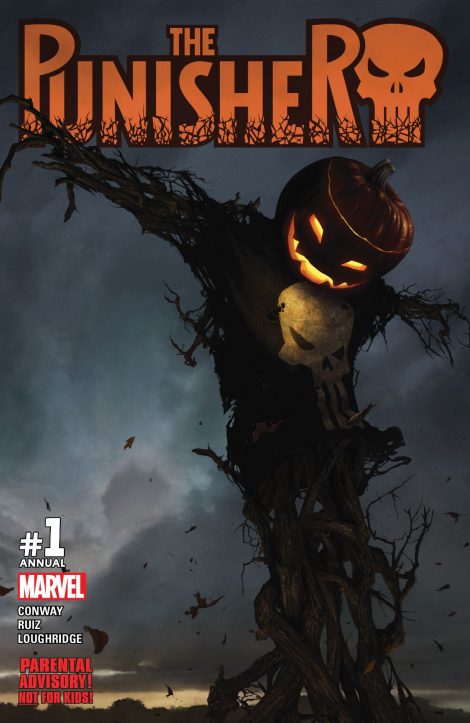
Author: Gerry Conway
Artist: Felix Ruiz
Publisher: Marvel Comics
★★☆☆☆
The Punisher is an intrinsically political character. It’s impossible to separate any honest portrayal of the character from the horror of the war in Vietnam and America’s silent response to millions of returning veterans in that era. As such, Frank Castle’s always going to be defined by politicized violence, by trauma and by the national conversation about veterans and survivors.
However, the challenge with Frank is maintaining his position both as a intrinsically political character as well as one who rarely can be characterized as morally right. He kills people, readily and unapologetically and his position as a figure outside of a legally recognized system as well as the system of stretchy morals that governs superhero comics often places him on the side of villains. That makes him a challenging figure when it comes to him appearing in comics that have an explicitly political message outside of the metaphor that spawned the Punisher.
That being said, I’m willing to give Gerry Conway, Castle’s co-creator, credit for trying to tell a story about race-based killings in 2016. Conway’s been a fairly outspoken liberal voice for decades and he’s clearly attempting to tell a story in The Punisher Annual #1 that draws from recent violence committed against minorities by white supremacists.
However, it’s a muddy story that plays out too slowly and far too complicatedly over less than 40 pages. Here, Detective Mamdouh puts down the badge to hunt the men who killed his father in a random racist shooting and realizes that the fastest way to the killers is by following Frank Castle. It’s a smart hook for a story, smart enough that it’s been used many, many times before in similar Punisher stories but it works effectively.
Conway’s script alternates between Mamdouh’s internal monologue as well as the thoughts of those closest to him and it comes fairly close to giving a variety of perspectives of what nonwhite New Yorkers think of Frank Castle’s vigilante crusade. It doesn’t go very far though, regrettably.
What doesn’t work is the portrayal of Castle. Some of that comes down to artist Felix Ruiz, an artist best known for his fill-in work. His Frank is lean and stringy in a story that really needs the Punisher to be an imposing figure and his scratchy lines tend to add confusion more than intensity here.
He’s not helped by a busy Conway script that fills panels with dialogue where a minimalist take might have better served the story. The benefit of using such a familiar setup is that Conway doesn’t need to really dig into so many familiar beats but he can’t seem to help himself here, giving lines and lines of backstory to characters who only appear on panel for a few pages.
That’d all be forgivable, or at least forgettable, if Castle felt true to character but he just doesn’t. The final scenes involve Punisher giving a speech that feels straight out of The West Wing in a way that feels painfully wrong.
Castle is many things and, yes, he’s a killer who sees himself as able to commit sins so others can keep their conscience clear but his dialogue goes too far here, clearly designed to cast the Punisher as an inevitability or at least a force of justice in a society lacking one.
It’s tempting in a year of racially motivated violence and justice seemingly left undone to wish for a force of judgement like Frank Castle. However, it betrays the central tragedy of his character and the failings of Vietnam to view the Punisher as a righteous figure. It’s something Conway, more than nearly any other creator, should have realized but doesn’t in an issue that preaches and offers bloody wish fulfillment instead of staying true to its characters or the morality it touts. The Punisher Annual #1 offers only uncomfortable subtext on top of an overly familiar story and it’s the last thing angry, justice-seeking comics readers need this year.

